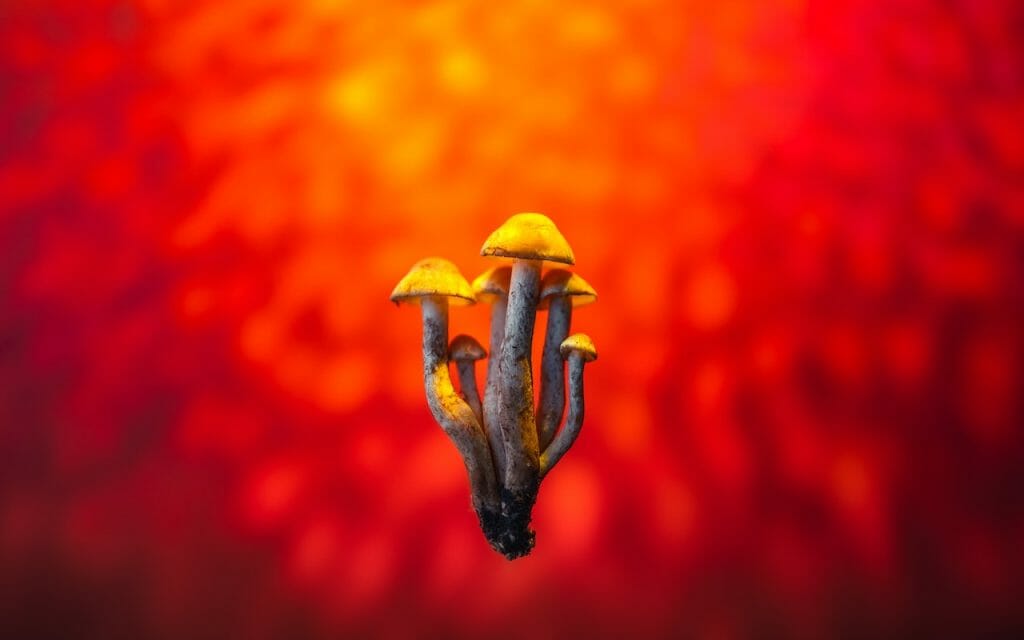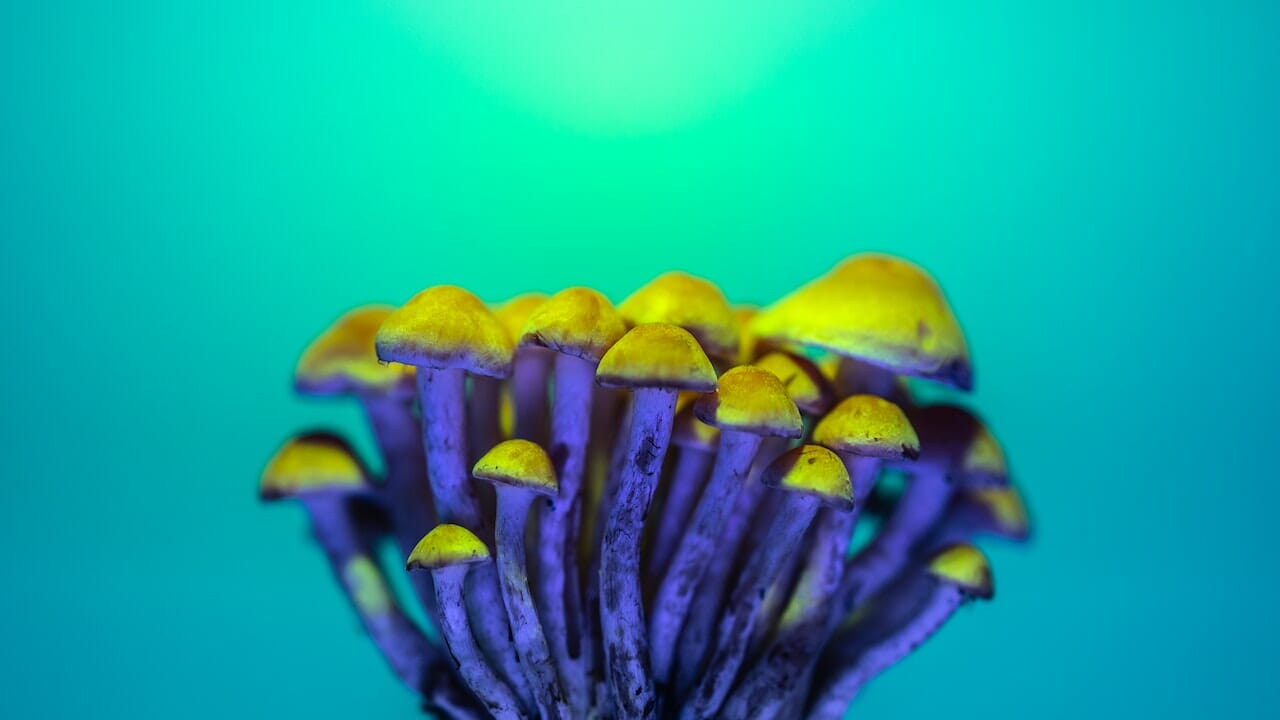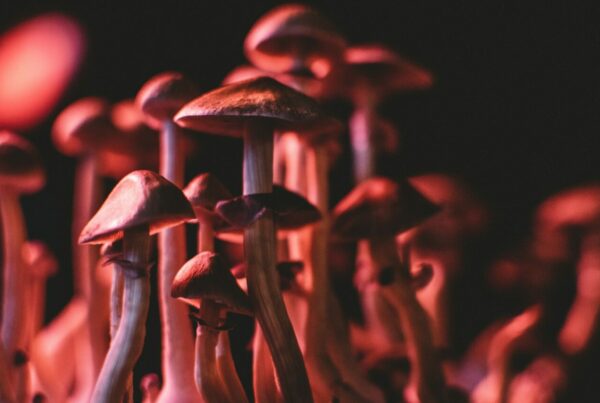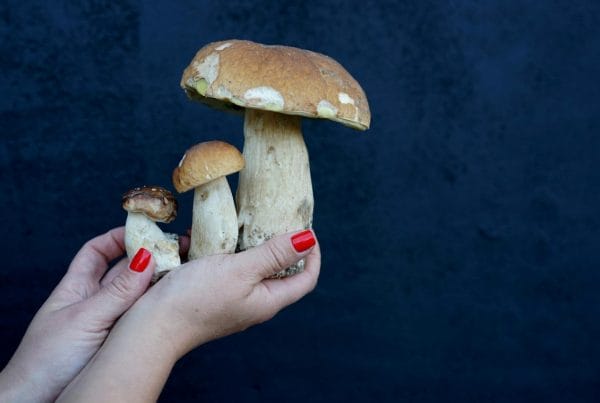Lysergic acid diethylamide (LSD) is an incredibly potent hallucinogen, extensively studied amidst psychedelic substances. Initially popular for its recreational use, LSD has evolved into a psychoactive substance with potential benefits for mental health. This altered perspective has paved the way for further exploration into the effects of LSD in a more consumable form such as LSD edibles.
Key Points:
- LSD is a powerful hallucinogen derived from the ergot fungus.
- LSD shares similarities with psilocybin and interacts with the 5-HT2A receptors.
- LSD can cause alterations in vision, mood changes, ego dissolution, and false hallucinations.

Getting to Know LSD
LSD is a highly potent hallucinogen that can dramatically alter one’s perception of reality and significantly distort sensory experiences. LSD originates from “ergot,” a fungus that grows on rye and other grains.
On a molecular level, LSD is a sophisticated chemical belonging to the ergoline family. It comprises a bicyclic hexahydroindole group and a bicyclic quinoline group (lysergic acid). The term ‘Lysergic Acid Diethylamide’ derives from the functional group attached to its core. LSD’s structure is similar to other ergoline alkaloids, such as ergotamine found in the ergot fungus Claviceps purpurea, and the neurotransmitter serotonin.
The Effects of LSD
When consumed, LSD enters the brain and prompts chemical reactions that may persist for several hours. LSD can induce the following short-term effects:
- Unforeseen mood swings
- Distortion of perception
- Feeling dizzy
- Decreased appetite
- Difficulty controlling movements
The Advantages What are the Benefits of LSD?
The benefits of LSD usage vary significantly and are largely dependent on the dosage ingested. Most research focuses on the advantages associated with small doses of this psychedelic substance. In the following sections, we explore the positive impacts of LSD consumption.
Pain Relief and Neuronal Development
Researchers at Maastricht University discovered that a single microdose of LSD can generate pain-reducing effects lasting at least five hours, if not longer.
In the Cold Pressor Test, where participants immerse their hands in 3°C (37.4°F) water for as long as possible, those who took a 20 mg dose of LSD managed to keep their hands submerged for 20% longer compared to those who didn’t. They also reported a decrease in pain and discomfort.
Furthermore, LSD can aid in the development and growth of the brain’s 86 billion neurons. Moderate LSD doses, ranging from 5 to 20 ug, increase BDNF levels in blood plasma. This is noteworthy since mood disorders like depression, often associated with neuroplasticity issues, might be relieved due to LSD’s beneficial effects on neuron health.
Improvement of Mental Health
Dr. Robin Carhart-Harris from Imperial College London introduced the entropic brain hypothesis. This idea implies that mental health disorders may stem from rigid thought patterns, perpetuated by an overly active default mode network (DMN). Psychedelic substances, such as LSD, can disrupt the DMN, heighten brain entropy, and aid in breaking down negative neural pathways while fostering the formation of positive ones.
A study involving more than 1,000 microdosers demonstrated a decrease in depression. Another extensive cross-sectional study showed a reduction in negative moods and harmful attitudes, coupled with an enhancement in open-mindedness and cognitive abilities.
Therapy for Addiction
A meta-analysis of randomized-controlled clinical trials implementing LSD in psychiatry determined it to be highly effective in treating alcohol addiction. This conclusion is further reinforced by the positive results reported by many patients treated for alcoholism by Humphrey Osmond and at the Spring Grove Hospital Centre during the 1950s and 1960s.
Easing Anxiety and Depression at Life’s End
Dr. Peter Gasser discovered that LSD-assisted psychotherapy can provide significant relief to terminally ill cancer patients from end-of-life anxiety. It also has been found to enhance their perceived quality of life. Currently, a Phase 2 trial is being conducted to further explore the potential benefits of LSD therapy in treating depression.
Deciphering LSD Edibles: Their Composition and Manufacturing Process
LSD edibles are food and beverage items that are laced with the hallucinogenic substance, LSD. These edibles can take a variety of forms, from chocolates, candies, and baked goods to more unusual items like LSD-infused mints.
Components
- LSD: This is the primary compound that triggers hallucinogenic effects. It is carefully measured and incorporated into the edible.
- Edible Base: The LSD is usually dissolved or infused into a consumable base such as a gummy, candy, sugar cube, or other edible substances. These bases serve as the delivery method for the hallucinogenic compound.
- Flavorings and Ingredients: The specific edible product may contain flavorings, sweeteners, and other ingredients to improve its taste and texture. These could include natural or artificial flavorings, colorings, and sugars, and can vary widely.
Manufacturing Process:
- LSD Synthesis: The initial step involves the chemical production of LSD. This process requires deep knowledge of organic chemistry and access to necessary chemicals, equipment, and a laboratory environment.
- Liquid Formulation: Once the LSD is synthesized, it is typically turned into a liquid form by dissolving it in a solvent. This liquid acts as a concentrated LSD solution.
- Infusion: The liquid LSD is then infused into an edible base like gummy candies, sugar cubes, or blotter paper. The base absorbs the liquid, enabling the oral consumption of LSD.
Experiencing the Psychedelic Impact of Psychoactive Compounds in LSD Edibles
LSD elicits intense visual effects. Colors seem more vivid, objects may seem to be enveloped by halos or rainbows, and shapes can transform. Regardless of whether the eyes are open or closed, users may see
LSD can rapidly alter one’s perception, resulting in a variety of mental states. The user might experience clarity and significance in their thoughts, or they could seem disjointed and illogical. Other impacts may involve shifts in the perception of time, distance, and self-image. The boundary between the self and the external world may become indistinct. Some users even report a merging of senses, such as seeing music or hearing colours.
Suggested LSD Products
Many LSD edibles are available for purchase, but it’s vital to buy from a trusted dispensary. You must verify that the edibles contain LSD and not other substances like PCP (embalming fluid), ecstasy, or ketamine.
Deadhead Chemist – LSD Infused Gummies
Deadhead Chemist offers LSD-laced edibles, each containing 100 micrograms (ug) of LSD and available in various flavours. Each package contains one gummy, which may aid individuals dealing with conditions such as obsessive-compulsive disorder (OCD), post-traumatic stress disorder (PTSD), alcoholism, depression, and cluster headaches.
Deadhead Chemist – Mint Tea
Deadhead Chemist’s raspberry mint tea provides a tastier and more aromatic way to experience LSD’s effects. LSD and other psychedelics mimic the serotonin neurotransmitter, enhancing the brain’s flow state.
Earthly Delights – Candy Flips
Candy flipping emerged during the late 1980s rave culture and remains popular today among thrill-seekers and party-goers. This combination often results in intense feelings of love and interconnectedness, accompanied by captivating visual effects like color enhancement, object morphing, and complex geometric patterns.
Closing Remarks
LSD has a long history of facilitating transformational experiences. As scientific knowledge about this substance continues to grow, so does its popularity. The introduction of LSD edibles offers a fresh approach for individuals interested in this area. These delightful goodies have gone
Experience LSD in a safe and enjoyable way with regulated doses.
3 Amigos Canada, the premier supplier of top-tier shrooms online in Canada, brings you an extensive assortment of LSD-infused edibles and cannabis products. Feel free to peruse our collection, add your chosen items to your basket, then sit back and relax as we handle the delivery. We also offer a diverse range of psilocybin shrooms, edibles, drinks, and capsules for your convenience. Make sure to check out our LSD delivery page for more details!
Frequently Asked Questions
What differentiates LSD from psilocybin?
CHARACTERISTICS LSD PSILOCYBIN Source Semi-synthetic chemical compound Naturally occurring in fungi Available Forms Tabs, microdots, liquid, gummies, blotter paper Dried mushrooms, capsules, teas, chocolates Potency Extremely potent, microgram doses (ug) Varies with mushroom species and preparation Onset and Duration Quick onset (15-60 minutes), short duration (3-5 hours) Gradual onset (30-60 minutes), moderate duration (4-6 hours)
How can one avoid negative experiences with LSD?
- Choose Your Environment Wisely
- Set Your Mindset
- Start with a Small Dose
- Have a Trip Supervisor
- Create a Peaceful Atmosphere
- Use Deep Breathing and Grounding Techniques
- Accept and Release
What is the duration of the effects?
The effects of the acid typically begin to appear between 30-60 minutes after ingestion. Those with greater sensitivity to psychedelics may start to notice the effects In as little as 15 minutes, you’ll be able to discern if you’re under the influence of acid. The peak of the hallucinogenic experience typically appears around the three-hour mark. During this period, time may seem to extend and hallucinations may occur.
It’s important to remain calm, as feeling detached from reality is a common sensation during this phase. The peak phase endures for about 3 to 5 hours, followed by the offset phase which lasts for another 3 to 5 hours.
How does LSD interact with the human body?
The primary interaction of LSD is with the brain’s serotonin system, where it binds to and stimulates the 5-HT2A receptor. This trigger initiates a series of neurochemical and physiological responses. The effects of LSD, which can be significantly diverse, are influenced by certain factors.
Does LSD exist in forms other than edibles?
Absolutely. LSD is available in a variety of forms. The four primary types of LSD products are blotter paper, liquid solutions, tablets/microdots, and gelatin sheets.
Additional readings:
| CHARACTERISTICS | LSD | PSILOCYBIN |
| Source | Semi-synthetic chemical compound | Naturally occurring in fungi |
| Available Forms | Tabs, microdots, liquid, gummies, blotter paper | Dried mushrooms, capsules, teas, chocolates |
| Potency | Extremely potent, microgram doses (ug) | Varies with mushroom species and preparation |
| Onset and Duration | Quick onset (15-60 minutes), short duration (3-5 hours) | Gradual onset (30-60 minutes), moderate duration (4-6 hours) |





